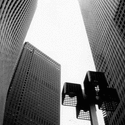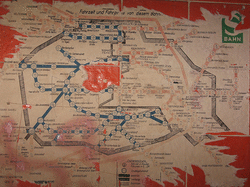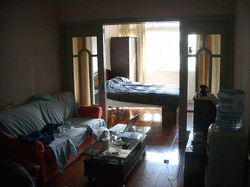Emergency essentials, include a wide variety of survival items
needed for urban survival in case an emergency were to hit home. The
first and foremost idea every home owner should consider is a cache of
water, The human body cannot go any longer than three days without it.
Having a 55 gal barrel would be ideal if a known emergency situation was
going to arrive. You could fill up the bathtub and sinks as well.
Having stainless steel cookware would be ideal for boiling water if the
known water source has become contaminated. Stainless steel will not
rust, can be cleaned easily and is extremely durable. This emergency
essentials guide is depicting a scenario that would be 7 days long.
Since this survival situation will be occurring at home, shelter would not be the next item to secure. In a urban and wilderness survival situation water, shelter, fire, food is how one would prioritize his or her actions.
Communication would be a high priority. You and your family will need to know what is happening in the outside world in order to base a decision on which appropriate action to take. Having a hand held magneto type shortwave AM/FM radio with a built in flashlight would be a good choice, they do not rely on batteries and with one minute of cranking you would have two hours of airtime, Depending upon the severity of the crisis cell phones may be unreliable and ought to be kept powered down to preserve battery power since there would be no way to charge them, except if you have invested in a home gasoline powered electrical generator.
An emergency essentials checklist would include a resource for fire. Ultimately in a home environment a white gas backpacking stove would give you a means for cooking food, as well as disinfecting water, This ought to be performed in a separate ventilated area to ensure nobody gets carbon monoxide poisoning. In the event this emergency predicament fell in the heart of a frigid winter. The household will need to position themselves in a single area with all the insulating materials that could be acquired. One's body heat alone should keep everybody comfortable. Some could be tempted to use the stove as a method to obtain heat within the safe room but left unattended falling asleep may very well be fatal.
Survival food, everybody knows what happens when NOAA is forecasting 6 inches of snow or more, people go bat crazy and wipe almost everything off of the store shelves. What would happen if a regional emergency was forecasted involving a total power outage or some thing of that nature? One would not really want to be on the road, let alone going to any food supply chain. Possessing a couple of weeks worth of canned goods and water needs to be considered. If a crisis never comes about good, but if it does...
Lastly emergency essentials must include cash as well as a firearm. More than likely credit lines will be down and cash would be your only exchange for goods provided there is electrical power. Survival preparation needs to be viewed as a social obligation, one that every individual owes to his / her loved ones and community and his or her nation.
Since this survival situation will be occurring at home, shelter would not be the next item to secure. In a urban and wilderness survival situation water, shelter, fire, food is how one would prioritize his or her actions.
Communication would be a high priority. You and your family will need to know what is happening in the outside world in order to base a decision on which appropriate action to take. Having a hand held magneto type shortwave AM/FM radio with a built in flashlight would be a good choice, they do not rely on batteries and with one minute of cranking you would have two hours of airtime, Depending upon the severity of the crisis cell phones may be unreliable and ought to be kept powered down to preserve battery power since there would be no way to charge them, except if you have invested in a home gasoline powered electrical generator.
An emergency essentials checklist would include a resource for fire. Ultimately in a home environment a white gas backpacking stove would give you a means for cooking food, as well as disinfecting water, This ought to be performed in a separate ventilated area to ensure nobody gets carbon monoxide poisoning. In the event this emergency predicament fell in the heart of a frigid winter. The household will need to position themselves in a single area with all the insulating materials that could be acquired. One's body heat alone should keep everybody comfortable. Some could be tempted to use the stove as a method to obtain heat within the safe room but left unattended falling asleep may very well be fatal.
Survival food, everybody knows what happens when NOAA is forecasting 6 inches of snow or more, people go bat crazy and wipe almost everything off of the store shelves. What would happen if a regional emergency was forecasted involving a total power outage or some thing of that nature? One would not really want to be on the road, let alone going to any food supply chain. Possessing a couple of weeks worth of canned goods and water needs to be considered. If a crisis never comes about good, but if it does...
Lastly emergency essentials must include cash as well as a firearm. More than likely credit lines will be down and cash would be your only exchange for goods provided there is electrical power. Survival preparation needs to be viewed as a social obligation, one that every individual owes to his / her loved ones and community and his or her nation.
To get more detailed information on the Emergency Essentials [http://www.survivalsun.com] visit survivalsun.com.
Survival Sun is being developed to provide information obtaining to Urban and Wilderness Survival.
Article Source:
http://EzineArticles.com/?expert=Bryan_Heini_SolomonSurvival Sun is being developed to provide information obtaining to Urban and Wilderness Survival.



